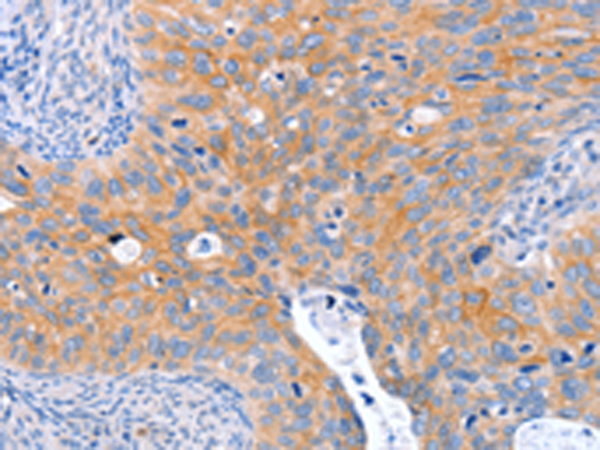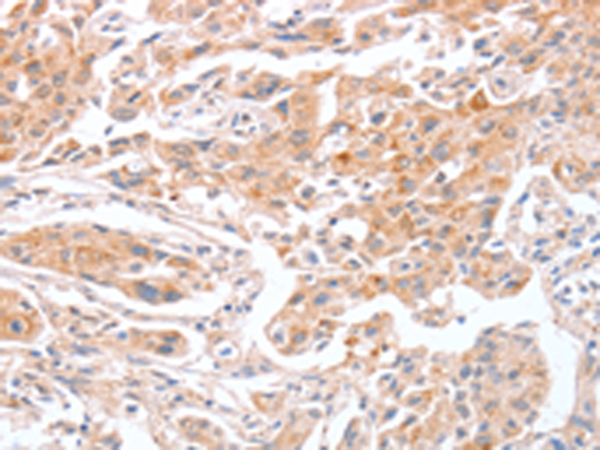

| WB | 咨询技术 | Human,Mouse,Rat |
| IF | 咨询技术 | Human,Mouse,Rat |
| IHC | 1/50-1/200 | Human,Mouse,Rat |
| ICC | 技术咨询 | Human,Mouse,Rat |
| FCM | 咨询技术 | Human,Mouse,Rat |
| Elisa | 1/1000-1/5000 | Human,Mouse,Rat |
| Aliases | GTB; NAGAT; A3GALNT; A3GALT1 |
| Host/Isotype | Rabbit IgG |
| Antibody Type | Primary antibody |
| Storage | Store at 4°C short term. Aliquot and store at -20°C long term. Avoid freeze/thaw cycles. |
| Species Reactivity | Human |
| Immunogen | Synthetic peptide of human ABO |
| Formulation | Purified antibody in PBS with 0.05% sodium azide and 50% glycerol. |
+ +
以下是关于ABO抗体的3篇代表性文献摘要(注:部分信息为示例性简化,具体文献需根据实际检索补充):
---
1. **文献名称**: *On Individual Differences in Human Blood*
**作者**: Landsteiner, K. (1900)
**摘要**: 首次发现ABO血型系统,描述了不同血型个体血清中天然存在的抗A和抗B抗体,阐明了这些抗体与红细胞抗原的免疫反应机制,为输血医学奠定基础。
---
2. **文献名称**: *Structure and function of natural anti-A and anti-B antibodies*
**作者**: Winchester, B. et al. (1976)
**摘要**: 通过生化分析揭示ABO天然抗体的IgM分子结构特征,探讨其与补体激活的关联性,并解释其在输血排斥和器官移植中的病理作用。
---
3. **文献名称**: *ABO hemolytic disease of the fetus and newborn*
**作者**: Zipursky, A. et al. (1983)
**摘要**: 综述ABO抗体通过胎盘引发新生儿溶血的机制,对比Rh血型系统差异,提出孕期抗体效价监测及临床干预策略。
---
**注**:实际文献需通过PubMed、Web of Science等平台检索关键词如“ABO antibodies”“natural antibodies”获取,建议结合近10年研究更新数据。
ABO antibodies, also called anti-A and anti-B isohemagglutinins, are naturally occurring antibodies targeting blood group antigens absent in an individual. Discovered alongside the ABO blood group system in the early 1900s by Karl Landsteiner, these IgM-class antibodies form the foundation of transfusion medicine.
Normally present from infancy, they arise without prior exposure to foreign red blood cells. Type A individuals have anti-B antibodies, Type B have anti-A, Type O possess both, while Type AB lack them. This inverse relationship stems from immune tolerance to self-antigens and cross-reactivity with environmental antigens like gut bacteria polysaccharides.
Their clinical significance lies in mediating acute hemolytic transfusion reactions when incompatible blood is administered. Anti-A/B IgM activates complement cascades, causing rapid intravascular hemolysis. Additionally, IgG-class ABO antibodies (formed through sensitization) can cross the placenta, potentially causing hemolytic disease in newborns, though less severely than Rh incompatibility.
ABO compatibility remains critical in blood transfusions and organ transplantation. Notably, universal donor O-blood lacks A/B antigens, while universal plasma donor AB lacks antibodies. Modern techniques like antibody titration and immunoglobulin class analysis help mitigate risks in sensitive cases such as organ transplants and maternal-fetal incompatibility.
×